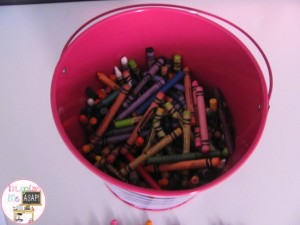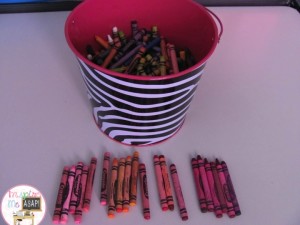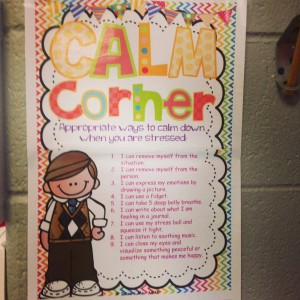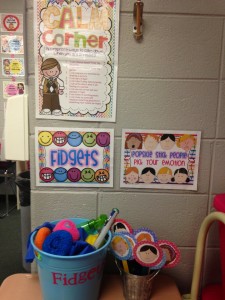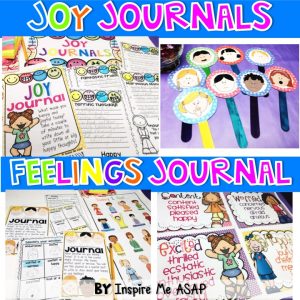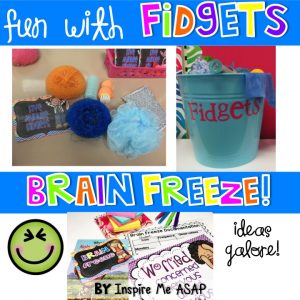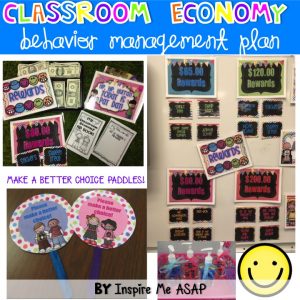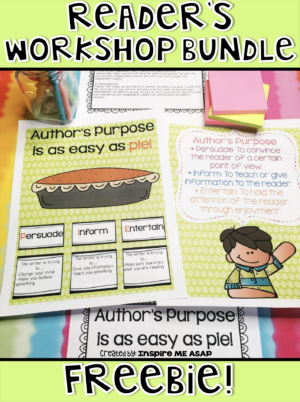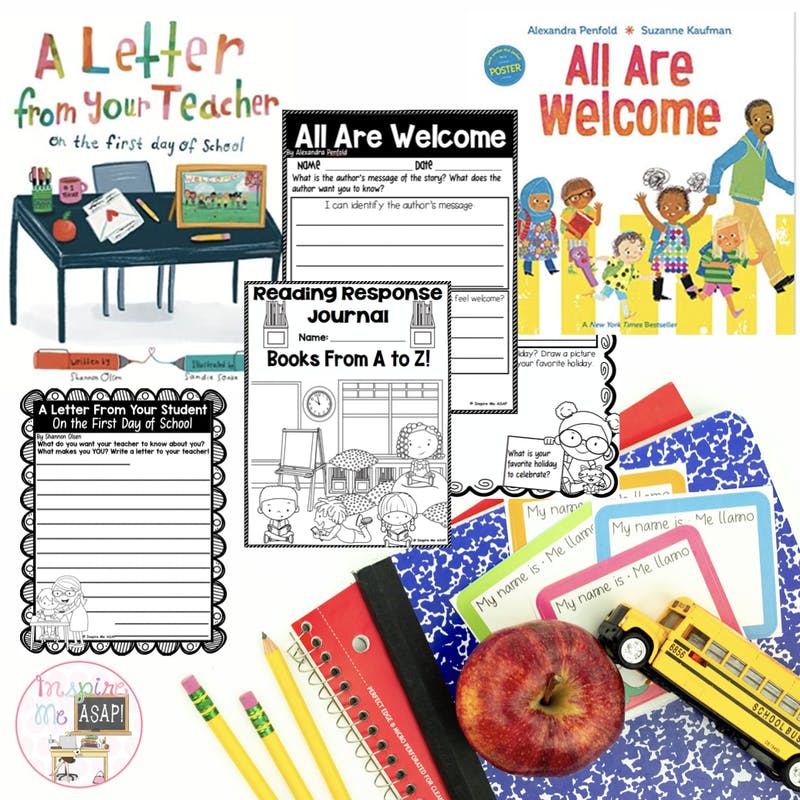It’s not always rainbows and butterflies.

I don’t know about you, but I can tell about the mood of my students the first minute they walk into the classroom in the morning. Their body language, facial expressions, and tone of voice say it all.
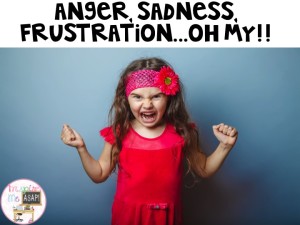
It seems like every school year, I have at least one student that needs coping strategies for dealing with anger. Some students have Oppositional Defiance Disorder and some students are dealing with very intense situations at home. Situations that NO child should ever have to deal with.

There are so many negative ways that I see children deal with their anger- they are physically aggressive, harm themselves, lash out at others, or just shut down.
Today I am going to explain one strategy that I use with students who have a difficult time dealing with their anger.
When I see a student who is on the verge of having a breakdown, or going into a rage, I calmy ask them to come work with me for a few minutes at the back table. I begin by asking them to find different shades of red crayons. (I have a huge pile of “extra” crayons in a bucket on my desk. If students are missing a specific color, they can borrow a crayon from my bucket.)
The student lines up the shades of red crayons from lightest to darkest.
I ask them to use a 5 level rating system for their anger. Each level also represents a different shade of red. Level 1, for example, would represent something that makes them annoyed. Light pink would be a crayon that might be used for level one.
He/she colors level 2 with a darker shade of red, which represents something that makes them “upset.”
Level 3 is a darker shade of red, and represents something that makes them “angry.”
Level 4 in yet a deeper shade of red and represent something that makes the students “fume” with anger.
The last level, level 5, is the darkest shade of red. This color red represents the most intense way to describe anger-“irate.”
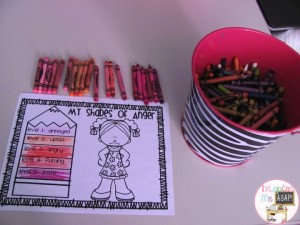
After the student colors each emotion with a different shades of red, then they are ready for the next step. I start with level 1 and ask them to write something (anything) that makes them annoyed. For example, I am annoyed with someone is driving really slowly and I can’t pass them.
I then ask the student to write down an example of situation that makes them upset, which represents that their emotions are escalating a level. For example, I might be upset when I see a student calling another student a mean name.
I then continue with this method until we reach level 5. The student thinks of one thing that makes them IRATE. I give an example of something that causes my blood pressure to sky rocket, such as cruelty to animals. The student understands that the darkest shade of red represents the deepest level of anger.
Once these levels are identified, I tell to the student that they will use the shades of anger to self regulate their anger.
From this point on, when the student is at a level of three or higher, they will need to implement a “cool off” strategy. I explain that when something a level 3 or higher happens, they are to discreetly write down the level of anger they are at (if it is three or higher) and put it on a sticky note.
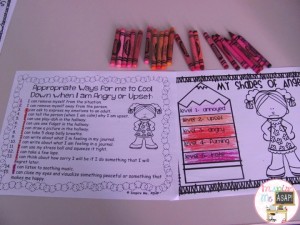
After they show me the sticky note identifying their level of anger, the student will then have the opportunity to use an APPROPRIATE way to deal with their anger. I provide a list of appropriate ways for a student to cool down when their are angry or upset. The student chooses a strategy that they like and has 5 minutes to calm down.
I actually have a “calm down” corner in my classroom. (It literally is a corner in the room.) You can read more about this (sometimes popular!) spot in my room by clicking HERE.
The student can choose to sit at the calm down corner, in the hallway, the back table, or even at their desk. Whatever they prefer. When the five minutes is up, the students always feel better- calmer and more focused for the rest of the school day.
What strategies do you use to help your students keep calm and deal with their anger? I would love to hear from you!
The ideas posted in this file are part of my Social and Emotional Learning Resource.
File description:
This file was created to give ideas for how to help the students who:
-Are happy, joyous, and are loving life! These students will love the joy journal writing about what they are grateful for.
-Are anxious, shy, and overwhelmed. Students who are afraid to speak up in class, get scared during a thunderstorm or fire drill or MAP testing, need a brain freeze pass or a bathroom break.
-Are angry, mad, physically violent towards others or themselves. Some students hide their anger well and some students need help controlling their anger. The shades of anger resources will help these students identify the emotion and appropriate ways to deal with the anger.
-Are embarrassed or sad because they acted on their anger and created hurt somebody else’s feelings. These students need to learn how to how to make a sincere apology.
-Are hyperactive and need help with controlling their excess energy. The five minute fidget pass is a great tool for these students.
-Are working to identify the different emotions that they feel on a daily basis. These feelings are not to be labeled as “bad.” Students need to understand that throughout the day, their emotions change.
However, with specific tools in place, they are better able to manage those emotions.
You will find that your entire class will benefit from some of the ideas presented in this file, such as the joy journal, the feelings journal, the classroom economy behavior system, or “listening with your whole self.” However, you may want to introduce some of the ideas presented in this file with only the students who you feel will benefit the most from them. For example, I only use my brain freeze passes for students who have ADD and I only use the fidgets for those students who have ADHD. However, you know your students best!
This file also includes:
* Resources and ideas for how to implement an individualized behavior plan
*Resources and ideas for how to implement a classroom economy behavior management plan- Students earn credits for good choices and debits for poor choices, getting paid on pay day and either saving their money or shopping for a fun reward
You can purchase this resource by visiting my Teachers Pay Teachers Shop: Social and Emotional Learning Resource
Or, save 10% by purchasing directly through my website.

